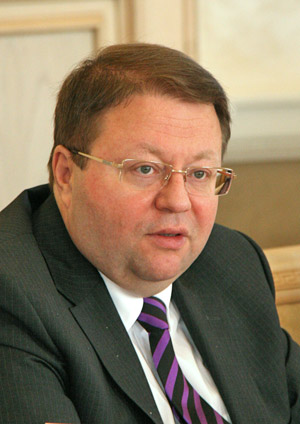CIS sees ongoing controversy over the use of popular brands
“From time to time CIS manufacturers dispute over so-called Soviet brands. Naturally, Russian Federation plays a key role in legal regulation of protection and use of Soviet trademarks. Could you tell us about Russia’s propositions to resolve this acute problem after the formation of the Customs Union?” asked a reader from Minsk, Viktor Chernov. We discussed the topic with Anton Ivanov, chairman of the Supreme Arbitration Court of the Russian Federation.
Prehistory of court disputes
During Soviet times, many brand names were allowed for general use after appropriate approval by public authorities. In the former Soviet Union, state-owned enterprises engaged in consumer goods production and sales were granted the right to use these trade names. Multiple plants and factories could legally manufacture the same product.
There are many examples of this branding practice including Lastochka (Swallow), Zabava (Amusement), Mishka Kosolapy (Clumsy Bear), Korovka (Little Cow), and Zolotoy Klyuchik sweets, other foodstuffs such as Zhiguli beer, Doktorskaya (Doctor’s) sausage, Yubileinoye (Jubilee) cookies, Stolichnaya, Moskovskaya, and Russkaya vodka, Druzhba (Friendship) and Yantar (Amber) cheese, retail chains Detsky Mir (Children’s World) and 1000 Melochei (1000 Small Things), pharmaceutical and other products.
According to Rospatent, only 4,000 brands of the kind remained after 1991: about 70 foodstuff trademarks, 250 confectionery brands, 600 medicines while the rest were industrial trademarks.
After the collapse of the Soviet Union, there was uncertainty about whom these trademarks should belong to. Formally, these brands could be not registered as trademarks in the Soviet Union. Often they would not be included in the list of assets to be privatized.
Issues related to the use of the Soviet trademarks in the economy were not clearly regulated by law. As a result, some symbols were freely used, while over time most of them were registered as Russian trademarks by new right holders.
The consequence of this approach was numerous disputes concerning validity, ownership and use of the Soviet trademarks. The situation became even more complicated after the formation of the Customs Union of Russia, Belarus and Kazakhstan. Each of these countries has a significant number of identical Soviet period trademarks that belong to different organizations, which adversely affects free movement of goods within the Customs Union territory.
Four ways to resolve the problem
The chairman of the Supreme Arbitration Court of the Russian Federation Anton Ivanov outlined several ways to resolve the Soviet trademarks issue.
The first way is to maintain the status quo. This option assumes that the existing system will not be changed. It guarantees protection to right holders who already have appropriate trademarks within the country in which the trademark is registered. Besides, they have the right to prohibit placing goods with the same or a similar mark in this territory’s market.
The second way is transition to ‘exterritorial trademark protection’. In this case, national brand owners will have the right to use their trademarks in the entire Customs Union without restrictions. This approach has a disadvantage -- a significant limitation of exclusive rights of national trademark holders and possible violation of rights of consumers who cannot always obtain reliable information about the product manufacturer or quality.
The third option is the full or partial recognition of the Soviet trademarks as being in the public domain. In case if Soviet brands lost their distinctiveness they can be recognized as generally used in the territory of the Customs Union. This will invalidate many of the Soviet trademarks and soften the existing conflicts in this area. A negative effect of transition to the public domain could be decline of the quality of products.
The fourth option is to transfer old Soviet trademarks to supranational bodies (such as the Eurasian Economic Commission) and granting them the right to license interested parties for use of brands (on a competitive basis or upon application). This option, in fact, implies deprivatization of Soviet trademarks and transferring them to the Common Economic Space agencies. With this approach, the existing disputes can be effectively eliminated and a neutral independent body would be in charge of intellectual property management. Substantial shortcomings of this approach are the need to compensate copyright holders for their losses and less efficient management of intellectual property compared to private right holders.
It is difficult to choose the way to solve this urgent problem. Time will show which of the proposed options will be dominant and implemented in practice.











